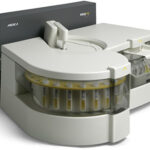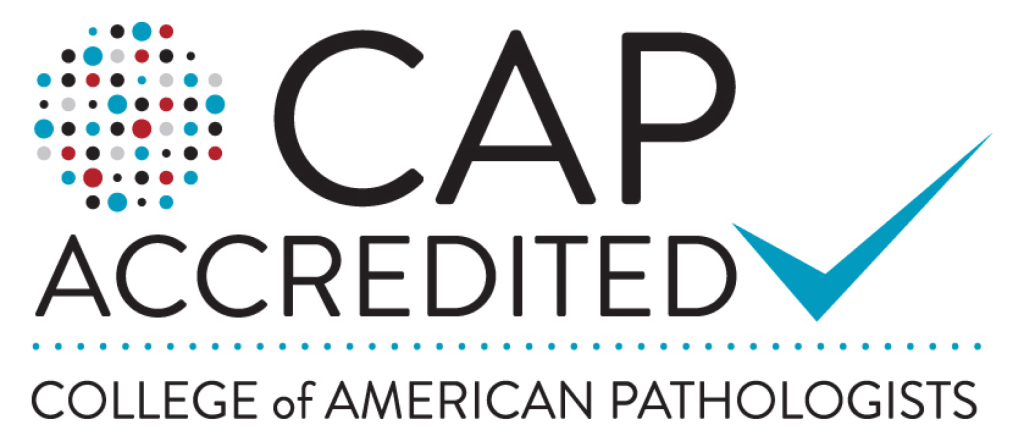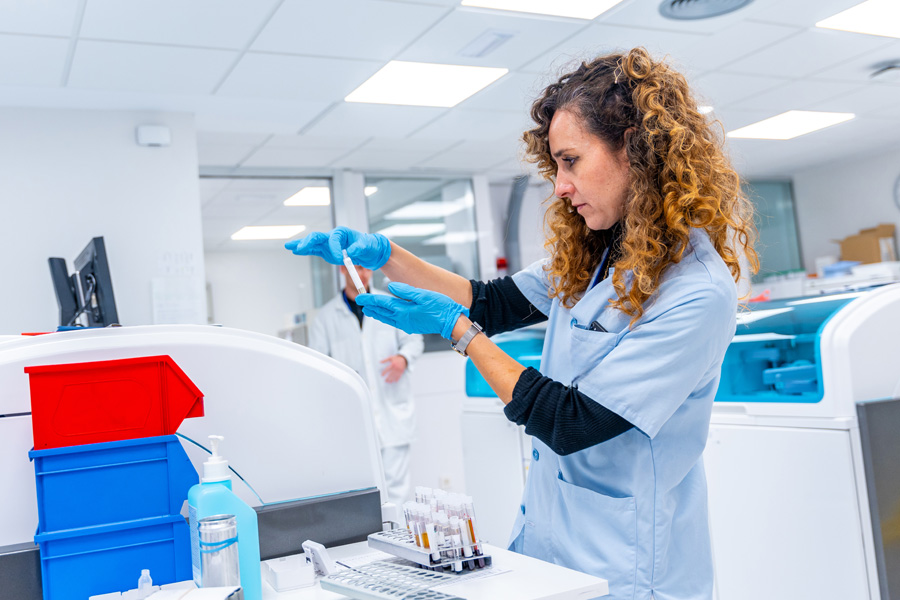
Why Laboratory Management Consultants Recommends the Medica EasyRA
August 28, 2025Laboratory Setup & Accreditation Guide: A Roadmap to Compliance
Achieving Top Patient Care and Sustainable Business Growth
Setting up a clinical laboratory is about more than compliance; it’s about providing the best in patient care and laying the foundation for a successful business. With multiple accreditation options, complex regulations, and significant financial investments involved, laboratory owners and healthcare providers can often use a helping hand at getting through the challenges.
At Laboratory Management Consultants, we’ve helped dozens of laboratories across the US transform from initial concept to fully operational, accredited facilities.
This article walks you through everything you need to know about laboratory setup and accreditation, from understanding your certification options to maintaining ongoing compliance.
Whether you’re establishing a physician office laboratory, expanding into toxicology testing, or building a multi-specialty reference laboratory, here is the roadmap you need for success.
Understanding Your Accreditation Options
Making the right accreditation choices is one of the most important decisions you’ll make for your laboratory. Each accrediting body offers different benefits, and your choice will impact everything from operational procedures to credibility in your market.
CLIA Certification: The Foundation
The Clinical Laboratory Improvement Amendments (CLIA) certification isn’t optional—it’s mandatory for any laboratory testing human specimens for diagnostic, preventive, or treatment purposes. Administered jointly by CMS, FDA, and CDC, CLIA sets the baseline quality standards for laboratory testing across the United States.
CLIA offers three certificate types:
Certificate of Waiver covers basic tests with minimal error risks, including dipstick urinalysis and blood glucose monitoring. These tests require minimal oversight but still require adherence to manufacturer instructions and basic quality practices.
Certificate of Compliance involves moderate complexity testing, including most automated chemistry analyzers and some molecular tests. This level requires qualified testing personnel and more robust quality control procedures.
Certificate of Accreditation enables high complexity testing, such as cytology, histopathology, and advanced molecular diagnostics. This requires the most stringent personnel qualifications and comprehensive quality systems.
The CLIA certification process typically takes 60–120 days for a Certificate of Waiver, but Certificates of Compliance or Accreditation may take 120 days or more, depending on inspection scheduling and application completeness. Costs range between $150-$8,000 biennially, depending on certificate type and test volume.
Beyond the application fee, laboratories need to budget for initial inspection costs and ongoing proficiency testing requirements. (Potentially $1,000–$10,000 in additional expenses to be budgeted
COLA Accreditation: The Practical Choice
The Commission on Office Laboratory Accreditation (COLA) is the practical choice for laboratories in physician’s offices and smaller clinical facilities. A CMS-approved accrediting organization, COLA satisfies CLIA requirements and also offers additional accreditation specifically for smaller laboratory operations.
What sets COLA apart is its educational approach to accreditation. Rather than simply identifying deficiencies, COLA surveyors work as consultants, helping laboratories understand not just what needs improvement, but why and how to implement lasting solutions. Their self-assessment tools and extensive resource library help laboratories prepare thoroughly for surveys.
COLA focuses on core specialties like chemistry, hematology, immunology, and microbiology, but also supports laboratories performing molecular diagnostics, toxicology, and other specialized testing.
The biennial survey process emphasizes practical compliance over paperwork, helping smaller lab maintain quality without being overwhelmed with administrative tasks.
Many physician-owned laboratories choose COLA because it balances rigorous standards with realistic expectations for smaller operations. The accreditation demonstrates commitment to quality while providing ongoing educational support to maintain compliance.
CAP Accreditation: The Gold Standard
The College of American Pathologists (CAP) accreditation represents the top of laboratory excellence. With over 4,000 accredited laboratories worldwide, CAP’s program is even recognized internationally for its scientific rigor and comprehensive standards.
CAP employs a peer review model. Inspections are conducted by practicing laboratory professionals who understand real-world challenges. This peer-to-peer approach ensures practical, relevant evaluations that go beyond mere compliance to promote true quality improvement.
The CAP checklist system covers every conceivable laboratory discipline, from routine chemistry to cutting-edge genomics. Updated annually with input from over 500 pathologists, these checklists incorporate the latest scientific advances and best practices.
CAP inspections satisfy CLIA requirements for accredited laboratories, and that can reduce the frequency of CMS inspections. But laboratories must still maintain a valid CLIA certificate and comply with CMS oversight, including potential validation surveys. CLIA fees still apply.
While CAP accreditation requires significant investment in time and resources, it provides unmatched credibility. For reference laboratories, hospital laboratories, or facilities seeking to distinguish themselves in competitive markets, CAP accreditation sends a clear message about the capabilities of your lab and its commitment to excellence.
The Laboratory Setup Process: From Concept to Operations
Pre-Setup Planning
Successful laboratory setup begins months before the first piece of equipment arrives. Start by clearly defining your laboratory’s scope and complexity level. Will you focus on routine chemistry and hematology, or expand into molecular diagnostics and toxicology? Your test menu drives every decision to follow, from space requirements to staffing needs.
During pre-setup planning, it’s important to conduct a thorough market analysis to understand local competition and unmet needs. Financial projections should account not just for initial setup, but also 12-18 months of operating expenses while you build test volume. Many new laboratories underestimate the time needed to establish referral patterns and achieve profitability.
Timeline planning is crucial. Allow 6-12 months from initial planning to first patient result. This accounts for construction or renovation, equipment delivery and validation, staff hiring and training, and the accreditation process. Trying to compress this timeline inevitably leads to costly mistakes and compliance issues.
Physical Space and Design
Laboratory design directly impacts workflow efficiency, staff safety, and regulatory compliance. Whether building new or renovating existing space, engage architects and engineers familiar with laboratory requirements early in the process.
Key design considerations include:
- Workflow patterns that minimize specimen handling and reduce contamination risk. Design should support unidirectional flow from specimen receipt through testing to result reporting.
- Safety features including proper ventilation, emergency showers, eyewash stations, and fire suppression systems appropriate for laboratory hazards.
- Utility requirements often exceed standard medical office needs. Plan for adequate electrical capacity, specialized gases, deionized water systems, and HVAC systems capable of maintaining temperature and humidity control.
- Regulatory compliance with local building codes, ADA requirements, and biosafety level specifications. Don’t forget less obvious requirements like proper waste storage areas and secure zones for controlled substances.
Equipment and Technology Selection
Choosing the right analyzers and technology platforms balances multiple factors: test menu requirements, throughput needs, staff expertise, and budget constraints.
Start by mapping your anticipated test volume to analyzer capacity. It’s better to have excess capacity than to immediately need additional instruments. Consider automation potential—even small laboratories benefit from automated pipetting and sample handling.
Laboratory Information System (LIS) selection deserves special attention. Your LIS becomes the backbone of laboratory operations, managing everything from order entry to result reporting. Cloud-based systems offer advantages for smaller laboratories, reducing IT infrastructure needs while providing robust functionality.
Don’t overlook middleware solutions that can extend analyzer capabilities and streamline operations. The right middleware can standardize result review across multiple platforms and implement autoverification rules that improve turnaround times.
Staffing Your Laboratory
Personnel qualifications make or break your accreditation success. CLIA and accrediting bodies have specific requirements for laboratory directors, technical supervisors, and testing personnel based on test complexity.
For high complexity testing, laboratory directors must be physicians (MD or DO) with appropriate board certification or doctoral scientists with specific training and experience. Moderate complexity laboratories have more flexible options, including master’s level scientists with appropriate experience.
Many laboratories struggle with the full-time director requirement. Part-time directorship arrangements can work well, provided the director maintains meaningful involvement in laboratory operations. This includes regular on-site presence, active participation in quality management, and availability for critical decisions.
Beyond meeting minimum requirements, invest in ongoing staff development. Well-trained, engaged staff reduce errors, improve efficiency, and ease the accreditation process.
Navigating the Accreditation Process
Preparation is everything when approaching accreditation. Begin developing your quality management system at least six months before your anticipated survey date. This includes creating comprehensive Standard Operating Procedures (SOPs) for every test and process, establishing quality control protocols, and implementing proficiency testing programs.
Mock surveys identify gaps before they become deficiencies. Conduct internal audits using your chosen accreditor’s checklist, and consider hiring consultants for objective pre-survey assessments. Train all staff on survey protocols—everyone from receptionist to laboratory director should understand their role during inspection.
When deficiencies arise, respond promptly and thoroughly. Successful corrective action plans address not just the immediate issue but underlying systems that allowed the problem to occur. This systematic approach prevents recurring deficiencies and demonstrates commitment to continuous improvement.
Why Partner with Laboratory Management Consultants
Laboratory Management Consultants brings decades of collective experience in laboratory setup and accreditation. We’ve guided laboratories from initial concept through successful accreditation with CLIA, COLA, and CAP. Our team includes experienced laboratory directors, technical supervisors, and quality management professionals who understand both regulatory requirements and practical operations.
Our comprehensive support includes facility design consultation, equipment selection guidance, SOP development, mock surveys, and ongoing compliance monitoring. We help you avoid common pitfalls that delay accreditation and increase costs.
Take the Next Step
Ready to begin your laboratory setup journey? Contact Laboratory Management Consultants today at (606) 487-0523 or email tpace@emaillmc.com for a free consultation.
Don’t let regulatory complexity delay your laboratory dreams. With the right guidance and support, you can build a thriving, compliant laboratory that delivers quality patient care while achieving your business goals.











